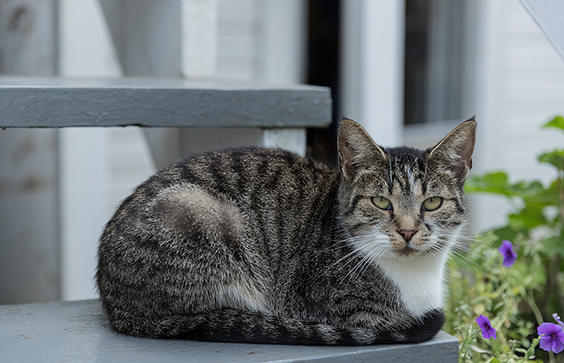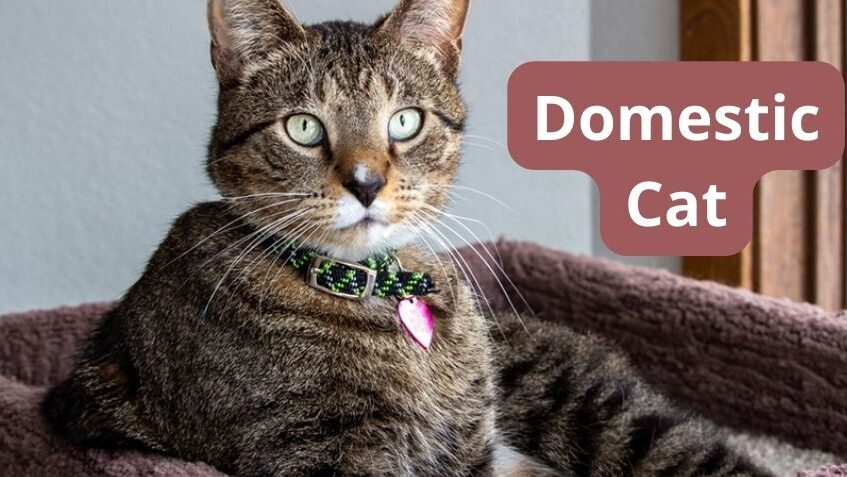Domestic Cat

Domestic cats, no matter their breed, are all members of one species.
COMMON NAME: Domestic Cat
SCIENTIFIC NAME: Felis catus
TYPE: Mammals
DIET: Carnivore
SIZE: 28 inches
WEIGHT: 5 to 20 pounds
SIZE RELATIVE TO A 6-FT MAN
Cat (Felis catus), also called house cat or domestic cat, is a member of the family Felidae in the order Carnivora. It is also the smallest member of that family, which includes lions, tigers, and pumas.
Felis catus has had a very long relationship with humans. Ancient Egyptians may have first domesticated cats as early as 4,000 years ago. Plentiful rodents probably drew wild felines to human communities. The cats’ skill in killing them may have first earned the affectionate attention of humans. Early Egyptians worshipped a cat goddess and even mummified their beloved pets for their journey to the next world—accompanied by mummified mice! Cultures around the world later adopted cats as their own companions.
The retina of the cat’s eye is made extra sensitive to light by a layer of guanine, which causes the eye to shine at night in a strong light. Cats’ eyes are large with pupils that expand or contract to mere slits according to the density of light.
Domestic cats and other species of the genus Felis purr. Purring is a continuous, rattling hum and often is interpreted as an expression of pleasure or contentment. However, purring also occurs in cats that are injured and in pain.
Hunting Abilities
Like their wild relatives, domestic cats are natural hunters able to stalk prey and pounce with sharp claws and teeth. They are particularly effective at night when their light-reflecting eyes allow them to see better than much of their prey. Cats also enjoy acute hearing. All cats are nimble and agile, and their long tails aid their outstanding balance.
Communication
Cats communicate by marking trees, fence posts, or furniture with their claws or their waste. These scent posts are meant to inform others of a cat’s home range. House cats employ a vocal repertoire that extends from a purr to a screech.
Diet
Domestic cats remain largely carnivorous and have evolved a simple gut appropriate for raw meat. They also retain the rough tongue that can help them clean every last morsel from an animal bone (and groom themselves). Their diets vary with the whims of humans, however, and can be supplemented by the cat’s own hunting successes.
Cats as pets
The popularity of the cat, especially of pedigreed breeds, has continued to grow. The cat’s independent personality, grace, cleanliness, and subtle displays of affection have wide appeal. Typically, cats are creatures of habit; they are inquisitive, but not adventurous, and are easily upset by sudden changes in routine. The ideal household cat has been separated from its mother between the ages of two and four months, raised in a clean home, kept away from unhealthy animals, and inoculated against common infectious cat diseases. Although cats often enjoy the company of other cats, especially when raised together from kittenhood, introducing a strange cat to other cats in the home can cause stress, aggression, and other behavior problems. Cats are generally less sociable than dogs, who more readily accept a new pack member.
You may also visit – https://www.facebook.com/angkopparasahayop




